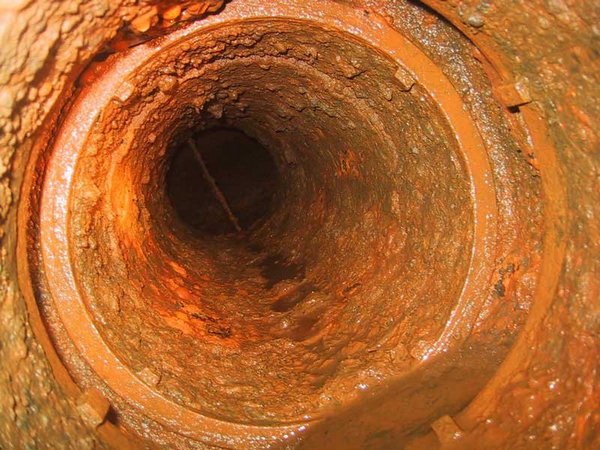Flue Gas Dew Point Corrosion Mitigation: Alloy Upgrading Techniques

Flue Gas Dew Point Corrosion: Mechanism and Implications
Flue gas dew point corrosion is a complex electrochemical process that occurs when flue gases cool below their acid dew point temperature. This phenomenon is particularly prevalent in industrial systems involving combustion processes, such as power plants, refineries, and chemical processing facilities.
The corrosion mechanism involves:
- Condensation of acidic species (primarily H2SO4 and HCl) from flue gas
- Formation of a thin electrolyte film on metal surfaces
- Electrochemical reactions leading to metal dissolution
- Accelerated corrosion rates due to the regeneration of acid by SO3 in the gas phase
The severity of corrosion is influenced by factors including:
- Flue gas composition (SO2, SO3, HCl concentrations)
- Metal surface temperature
- Gas flow dynamics
- Presence of deposits or scale
Quantifying Corrosion Impact
The effects of flue gas dew point corrosion can be quantified through various metrics:
- Corrosion rate (mm/year or mils per year)
- Wall thickness loss over time
- Changes in mechanical properties (e.g., tensile strength, ductility)
- Increased heat transfer resistance due to corrosion product formation
- Frequency and duration of unplanned shutdowns
Alloy Upgrading: Theoretical Basis
Alloy upgrading as a mitigation strategy is rooted in principles of materials science. The objective is to modify the surface composition to enhance:
- Thermodynamic stability in the corrosive environment
- Formation of protective oxide layers
- Resistance to acid attack and electrochemical dissolution
Key alloying elements and their roles:
- Chromium: Forms passive Cr2O3 layer
- Nickel: Enhances overall corrosion resistance
- Molybdenum: Improves pitting resistance
- Silicon: Promotes formation of protective silica layer
- Aluminum: Forms stable Al2O3 layer at high temperatures
High Velocity Thermal Spray (HVTS) Technology
HVTS is an advanced surface engineering technique that offers significant advantages for alloy upgrading in flue gas environments.
HVTS vs. Traditional Coating Methods Comparative Analysis:
Alloy Selection Criteria for Flue Gas Environments
Selecting appropriate alloys for upgrading requires consideration of multiple factors:
- Corrosion resistance in sulfuric and hydrochloric acid environments
- High-temperature oxidation resistance
- Thermal expansion coefficient compatibility with substrate
- Erosion resistance
- Cost-effectiveness
Implementation Methodology
A systematic approach to alloy upgrading for flue gas dew point corrosion mitigation involves:
System Analysis
- Flue gas composition analysis (XRF, gas chromatography)
- Temperature profiling using thermocouples or thermal imaging
- CFD modelling of gas flow patterns
- Stress analysis of components
Material Selection
- Electrochemical testing (polarization curves, EIS)
- High-temperature corrosion testing (weight gain method)
- Microstructural analysis (SEM, EDS)
- Mechanical property evaluation (hardness, adhesion strength)
Process Optimization
- Surface preparation
- In-situ particle diagnostics (temperature, velocity)
- Coating characterization (XRD, porosity measurement)
Quality Assurance
- Non-destructive testing (ultrasonic thickness measurement, eddy current testing)
- Accelerated corrosion testing (salt spray, acid immersion)
- Thermal cycling tests
- Long-term performance monitoring
Key Advantages of IGS HVTS Alloy Upgrades:
Rapid Deposition: The HVTS process enables swift and precise deposition of alloy coatings, significantly reducing turnaround times compared to conventional welding or cladding techniques.
Enhanced Corrosion Resistance: IGS employs meticulously engineered alloys specifically formulated to withstand the aggressive chemical environment characteristic of FGDPC.
Minimized Downtime: Our on-site capabilities allow for alloy upgrades without the need for extensive equipment disassembly or prolonged shutdowns, ensuring minimal disruption to operations.
Cost-Effectiveness: By extending equipment lifespan and reducing maintenance frequency, IGS’s solution delivers a compelling return on investment.
Global Expertise: Leveraging decades of experience and a worldwide presence, IGS possesses the technical proficiency and resources to address diverse Flue Gas Dew Point Corrosion challenges across various industries and geographies.
Tailored Engineering Approach
IGS adopts a comprehensive engineering approach, commencing with a meticulous assessment of your specific Dew Point corrosion risks. Based on this evaluation, our experts will recommend the most suitable alloy composition and coating thickness for your unique operating conditions. Subsequently, our state-of-the-art HVTS equipment is deployed to deposit the alloy layer with exceptional precision and uniformity, ensuring a durable and reliable protective barrier.
Conclusion
Alloy upgrading through advanced techniques like HVTS offers a robust solution for mitigating flue gas dew point corrosion. By leveraging materials science principles and cutting-edge application technologies, engineers can significantly enhance the longevity and reliability of industrial systems exposed to corrosive flue gas environments.
Speak to a flue gas dew point corrosion advisor today.
More corrosion and erosion management articles from Integrated Global Services:
CO₂ Corrosion Prevention and Control in Oil and Gas Production
How to Prevent Microbially Influenced Corrosion (MIC) with On-Site Alloy Upgrade
Why is High Emissivity Coating Durability Important in Fired Heaters?
Strategies for Preventing Internal Pipeline Corrosion in the Energy Industry
Mitigating Metal Dusting Corrosion in Ammonia and Methanol Reformers
Combating Flow Accelerated Corrosion in Power Plants with IGS HVTS Technology
Why an Alloy Upgrade is the Best Solution to Crude Unit Overhead Corrosion Control
Protecting Hydropower Turbines from Corrosion with HVTS Coatings
Protecting Offshore Wind Turbines – Splash Zone Corrosion
The Critical Role of High Emissivity Coatings in Space Exploration
Organic Coatings in Pressure Vessels: Internal Coating Failure Analysis
How to Stop Corrosion on Your Refinery Distillation Column
Causes of Boiler Corrosion and Benefits of Boiler Tube Coating
5 Common Causes of Refractory Failure and How to Fix Them
Boiler Tube Leaks Prevented with Proactive Maintenance
Understanding Oil & Gas CO2 and NOx Emissions, and the Science Behind Reducing Them
A Guide to Amine Stress Corrosion Cracking in Oil & Gas Processing

